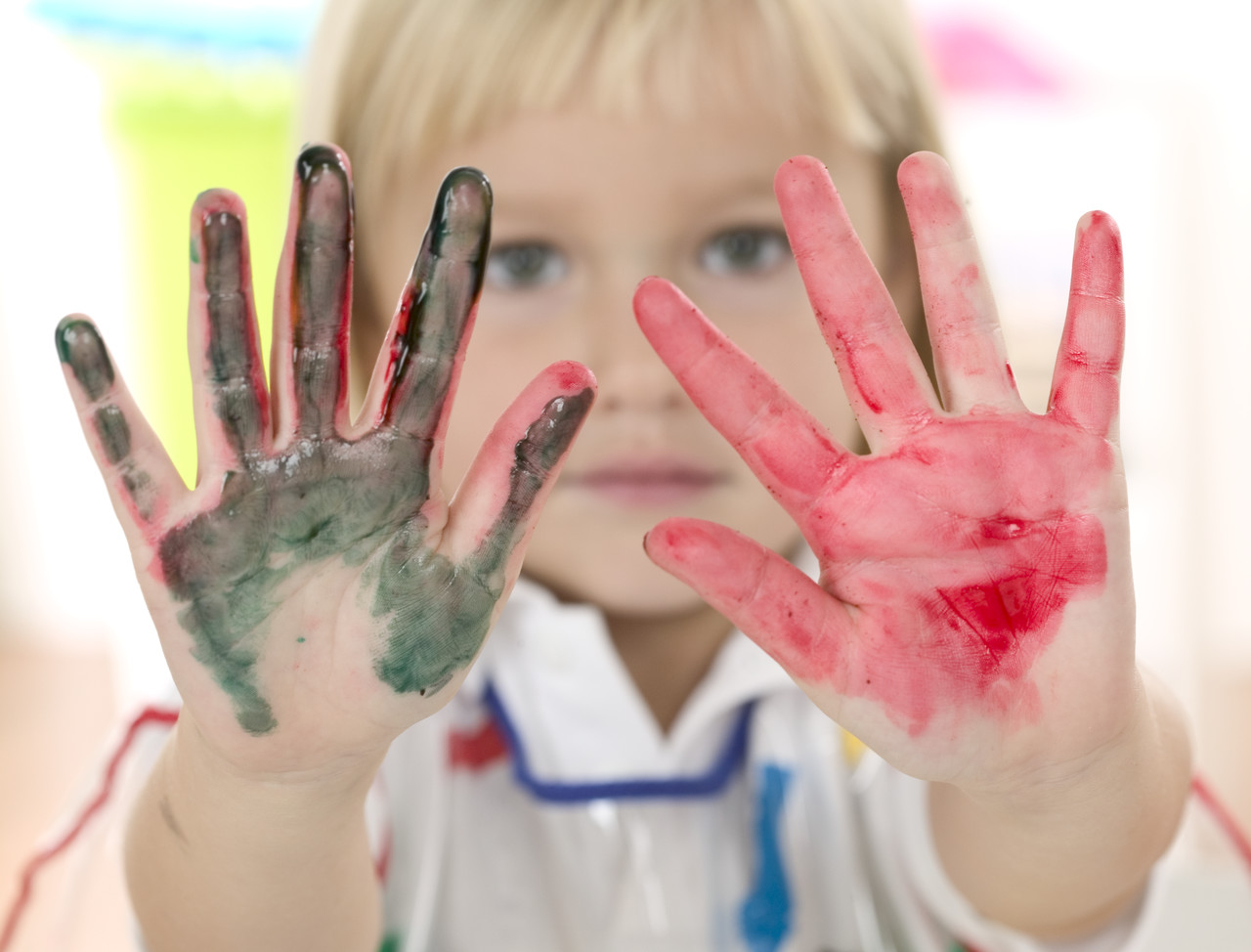Bernice recently shared two stories which I call feel good books. The first is And I Love You by Ruth Krauss and Steven Kellogg. As the inside cover states, the book, "celebrates the loves between a parent and a child." The verse is simple and it would be fun to continue the pattern of the book and think of other examples of big things which love little things. This would be a great bedtime story, but would also be a wonderful story for caregivers to read before nap time.
The other book Bernice shared has a little suspense to it. In Anita Lobel's book Nina Lost and Found, a house cat slips out the door to explore the world. As she does, day becomes night and what seemed so pleasant is now frightening. When Nina hears her owners calling she overcomes her fears and runs as quickly as she can back to her home.
Most children like a little suspense in stories and enjoy the sense of relief when things turn out ok. I think it must help them build a sense of security and help them get through small insecure times in their life. The more examples we have of things turning out okay, the more positive our attitudes will be.
Over the holidays, my grandson told me there are yellow feelings and black feelings. He went on to explain, if you have those positive yellow feelings, things often turn out better for you. I asked how he knew this. He told me there were signs about it in his school. Sounds like they ware trying to build positive outlooks. For me, I just like knowing that Nina survived her adventure and made it back home safely.

Sunday, January 2, 2011
What's That Sound?
If you are like me, you sometimes worry about all the things that might happen. Occasionally I even worried about things before I even know what I am really worrying about. If you take time to listen to children, you will find out that some of them do the same thing. A little boy once told me an elaborate plan about what he would do should he be left behind in the classroom. I know he was just trying to find a way to deal with his fear. I was glad he shared his worry with me. I explained all the safeguards teachers use to make sure that doesn’t happen.
Author Norbert Landa and illustrator Tim Warnes might say that this little guy was making a monster out of a mouse. In The Great Monster Hunt, Duck hears a noise coming from under his bed. He is so afraid; he can’t even look to see what is making the sound. His does tell his friend Pig about the problem, but instead of investigating Pig goes to get help from Bear. Unfortunately, as Pig tells bear about the problem, the sound coming from the bed is exaggerated. This sequence of events continues through a number of animals until the sound is not a tiny one, but a great bog one. The animals are sure there must be a monster under the bed. They come up with a plan to help Duck, but in the end they realize they made a monster out of a mouse.
I think teachers need to take more time to listen to children and discover the things that worry them. Small groups of children seem to work best for this kind of discussion. Some children won’t speak until they have heard others share their thoughts, but large groups are often too intimidating for quieter children. I think it also helps for adults to talk about things which worry them and to discuss how they handle their fears. Reading The Great Monster Hunt would be a good conclusion to such a discussion. It could help children to see that it is better to first find out if there really is something to worry about.
Author Norbert Landa and illustrator Tim Warnes might say that this little guy was making a monster out of a mouse. In The Great Monster Hunt, Duck hears a noise coming from under his bed. He is so afraid; he can’t even look to see what is making the sound. His does tell his friend Pig about the problem, but instead of investigating Pig goes to get help from Bear. Unfortunately, as Pig tells bear about the problem, the sound coming from the bed is exaggerated. This sequence of events continues through a number of animals until the sound is not a tiny one, but a great bog one. The animals are sure there must be a monster under the bed. They come up with a plan to help Duck, but in the end they realize they made a monster out of a mouse.
I think teachers need to take more time to listen to children and discover the things that worry them. Small groups of children seem to work best for this kind of discussion. Some children won’t speak until they have heard others share their thoughts, but large groups are often too intimidating for quieter children. I think it also helps for adults to talk about things which worry them and to discuss how they handle their fears. Reading The Great Monster Hunt would be a good conclusion to such a discussion. It could help children to see that it is better to first find out if there really is something to worry about.
Subscribe to:
Comments (Atom)

